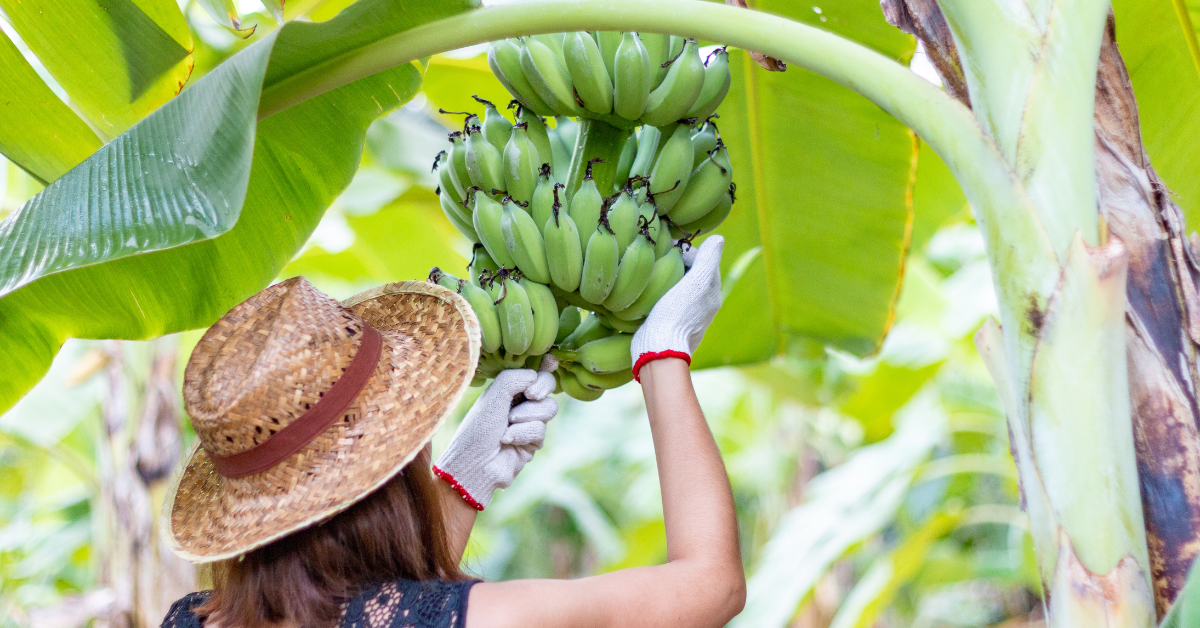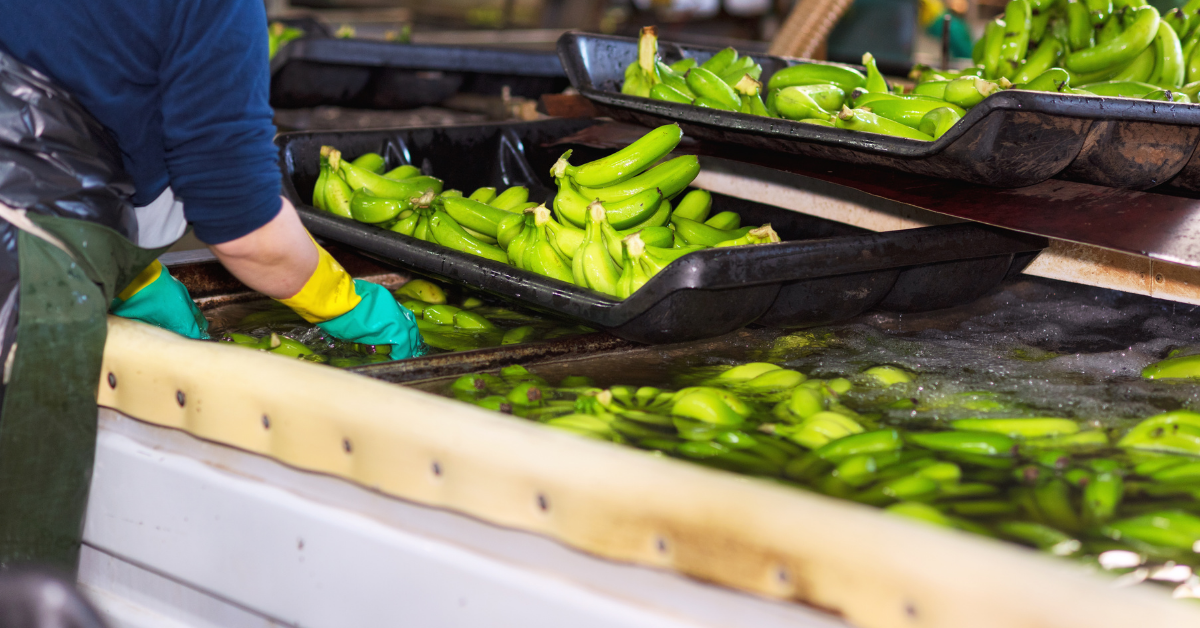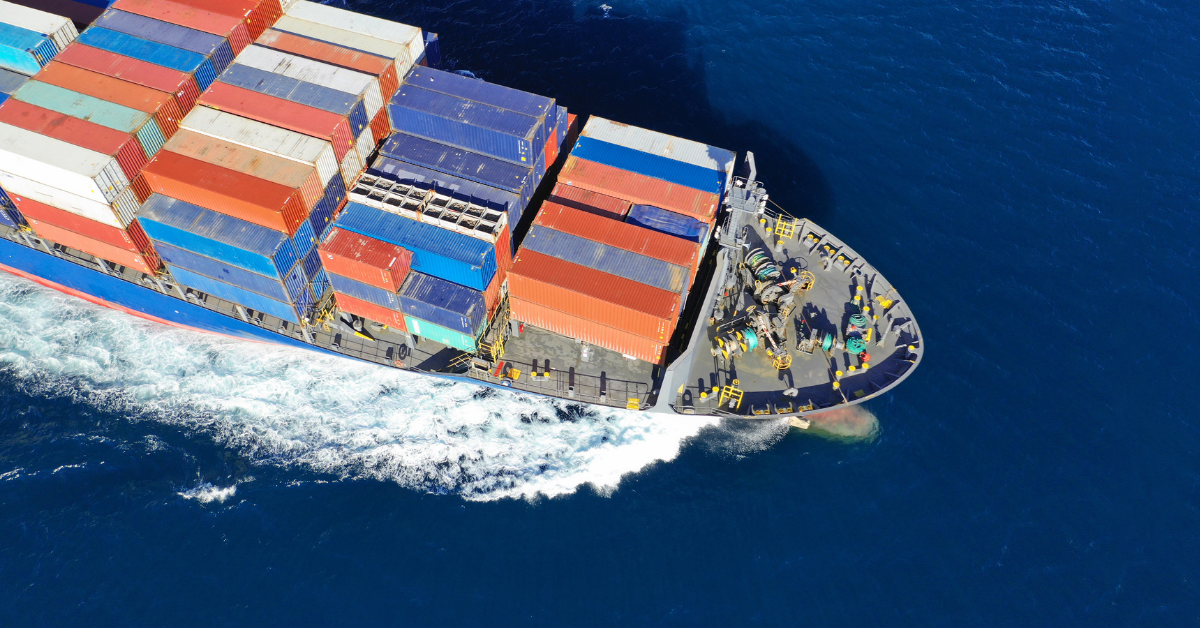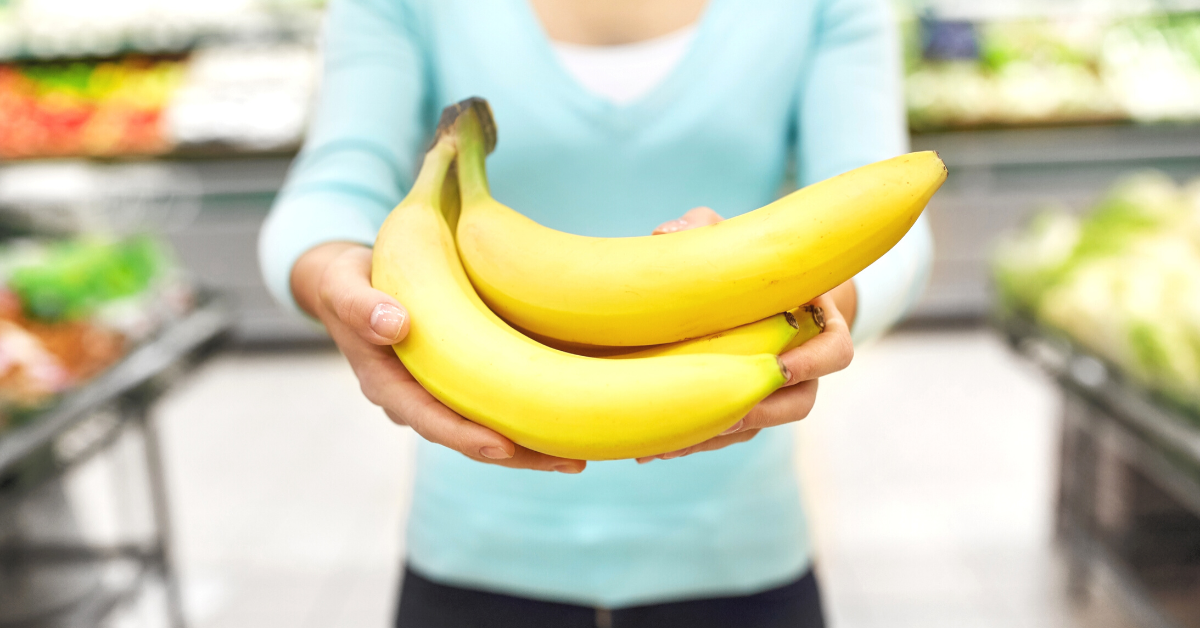Have you ever wondered how you get fresh and ready-to-eat bananas in your kitchen throughout the year? Did you know those bananas can travel around the world staying fresh without turning brown for weeks at a time?
Bananas are one of the cheapest and most consumed fruits around the world. In fact, they are the fourth most commonly traded agricultural product. The United States alone consumes 6.4 billion pounds of bananas each year, with the average American consuming 27 pounds of of the fruit annually! Since most bananas are not largely grown in the United States, they all have to be shipped here.Americold’s temperature-controlled infrastructure and supply chain solutions play an important role in the distribution of bananas and their journey from their country of origin to your local grocery store. Many of the facilities in our vast network of warehouses around the world are situated near ports or consumer markets to support the unique requirements of storing and transporting this favored fruit and other perishable goods.

As perishable goods, like fruit and vegetables, travel around the world, they need to be transported, stored and preserved in the right environment to maintain their natural form. With the advanced technology and innovative solutions that are prevalent in the food supply chain industry today, it easier than ever to move temperature-sensitive foods from one country to another, so long as your work with a temperature-controlled supply chain specialist. The supply chain industry uses cold storage cargo containers and warehouses to keep perishable goods fresh and avoid impairing their taste or appearance. A banana goes through numerous steps, such as farming, harvesting, packaging, and transportation, before it reaches a consumer.
Growth and Distribution of Bananas Globally
Americold helps perishable goods move from country to country, by providing critical temperature-controlled infrastructure. Because of Americold’s infrastructure and services in the supply chain industry, hundreds of millions of individuals can consume what was once considered an inedible fruit only available across Southeast Asia. Today, almost all of the United States’ banana supplies come from Central America. How did a fruit that was only native in Southeast Asia become so widely available? It’s quite a story.
A Brief History of Bananas
Historians and anthropologists generally agree that the first banana originated in Southeast Asia and India around 8000 to 5000 BC, with some scientists believing it to be the world’s first fruit. How we know and see bananas today isn’t how they always were or are in other parts of the world. To begin with, there are thousands of different kinds of bananas, growing in various climates and conditions and consumed differently. Some are meant to be cooked while others can be eaten raw. The Cavendish banana is the banana that we are most familiar with as it is the most widely consumed banana in America.
From Southeast Asia, the fruit was brought west by Arab conquerors and then transported across land and sea by explorers and missionaries. Although bananas started to be traded internationally by the end of the fourteenth century, it wasn’t until 1834 that the fruit was mass-farmed. From the late 1880s, mass production exploded across the globe. Now, bananas have become the single most consumed fruit in America, out eating apples and oranges combined. The development of railroads and technological advances in refrigerated maritime transport subsequently enabled bananas to become the world's most traded fruit (Banana: The Fate of the Fruit That Changed the World).
History Channel “The History of the Banana in Under 2 Mins”
Bananas and the Supply Chain Industry
The global production, transportation, and distribution of a banana is a very long, delicate, and complex process that requires a lot of effort and quality control to protect the fruit. Bananas are a relatively soft fruit that can easily be damaged. Bananas can travel around the world due to the advancement of refrigeration systems available on cargo ships, at ports, and at cold storage warehousing facilities being able to replicate the necessary conditions to temporarily suspend the bananas’ natural ripening timeline. From the farm to the consumer's table, bananas go through 6 critical steps during their journey.
The 6 Steps a Banana Takes to Journey from Farm to Table
The journey that many fruits—including bananas, apples, oranges, and grapes—take is similar across the fresh produce supply chain industry. This journey consists of the same basic six steps, which are:
- Production
- Package
- Export
- Import
- Ripen
- Distribute
Step 1: Production through Farming
Like most fresh fruit, banana production starts on a farm. This is the first step to preparing bananas for consumption. The largest producers and growers of bananas are Honduras, Costa Rica, Panama, and Guatemala. Banana production takes approximately nine to twelve months. To keep the banana fresh for shipment, it is necessary to harvest them when they are still green. Once grown and harvested the farmers prepare them for packaging and transportation. The farmer must keep a record of when the banana was harvested, a quality description, and document field identification. These records ensure freshness and ensure the fruit can be traced back to the correct farmer through all of the future processes.

Step 2: Packaging
After the bananas are harvested, the fruit is inspected, separated into bunches, washed, and packed into boxes. The fruit is labeled according to their destinations and retailers around the globe. The bananas are almost immediately placed into a temperature controlled environment to limit further ripening – the fruit goes into a kind of hibernation. The bananas are then transported to ports and loaded onto cargo ships to begin their global journey.

Step 3: Exporting
During the export stage, the bananas are kept in cold storage or reefer containers to preserve their integrity and state of hibernation. These journeys can last several weeks but the bananas are safe as they continue to sleep.

Step 4: Import
Once their journey across the sea is complete, the bananas arrive at a port. A large volume of bananas destined for the United States come from Central America and travel through the Panama Canal to the Port of Wilmington in Delaware. This is the number one seaport for imported bananas in the United States and second in the world! The banana containers are unloaded, cleared through customs, and transported to temperature-controlled supply chain service provider facilities or in some cases, ripening facilities.
Temperature-controlled supply chain service providers, like Americold, continue to store the bananas until their customers place orders and come to collect them. It can take weeks to get a banana from its farm to consumers but only days for them to go brown or one bad bump to be bruised, so the utmost in careful handling is essential throughout their international journey.
Step 5: Ripening
The fruit is removed from the refrigerated containers and placed in an enclosed temperature-controlled room. Here the fruit will start the natural ripening process in a controlled environment that monitors room temperature and humidity, carbon dioxide and ethelyn gas levels, a gas naturally produced by fruits. In some cases, Americold will coordinate ripening and prepare the bananas for point of sale displays, and may even deliver the bananas out to retailer distribution centers.
The ripening process can also include, slowly rising the room temperature over several days. It is a very precise process that is meant to simulate the natural environment of Central American growing regions, and helps ensure that the bananas are all ripening at the same rate. Time in the ripening room aligns with the order requirements of the grocery store customers: the bananas transition to a color stage between green and yellow – this is why you see bananas at various stages of ripeness in your local grocery store.
Step 6: Distribution
Now the bananas are ready to be shipped to retail distribution centers and on to the grocery stores on refrigerated trucks. The fresh and ready-to-eat bananas will soon be available for purchase.
This specialized process was developed to ensure the protection of the fruit and to ensure fresh, harvest-like condition once they get to the point of sale. The temperature-controlled supply chain industry plays an essential role throughout this process: from farming to the delivery of bananas at your grocery store, so it’s essential that you, as a seller of bananas, choose supply chain partners who will protect your investment and ensure the smooth and careful movement of bananas from their origin until you take delivery yourself.

Americold’s Role in Distributing Bananas
Americold has port-side facilities dedicated to supporting the international fruit and vegetable supply chain with a full suite of value-added services to ripen, grade, repack, and transport products being imported or exported. We can support the unique environments and conditions necessary to keep fruits and vegetables in peak condition, which means higher quality product on store shelves, and greater return on your investment. Learn more about our storage, port, and transportation capabilities by speaking with our team today or requesting more information.
Subscribe for Updates
Receive the latest news from Americold
